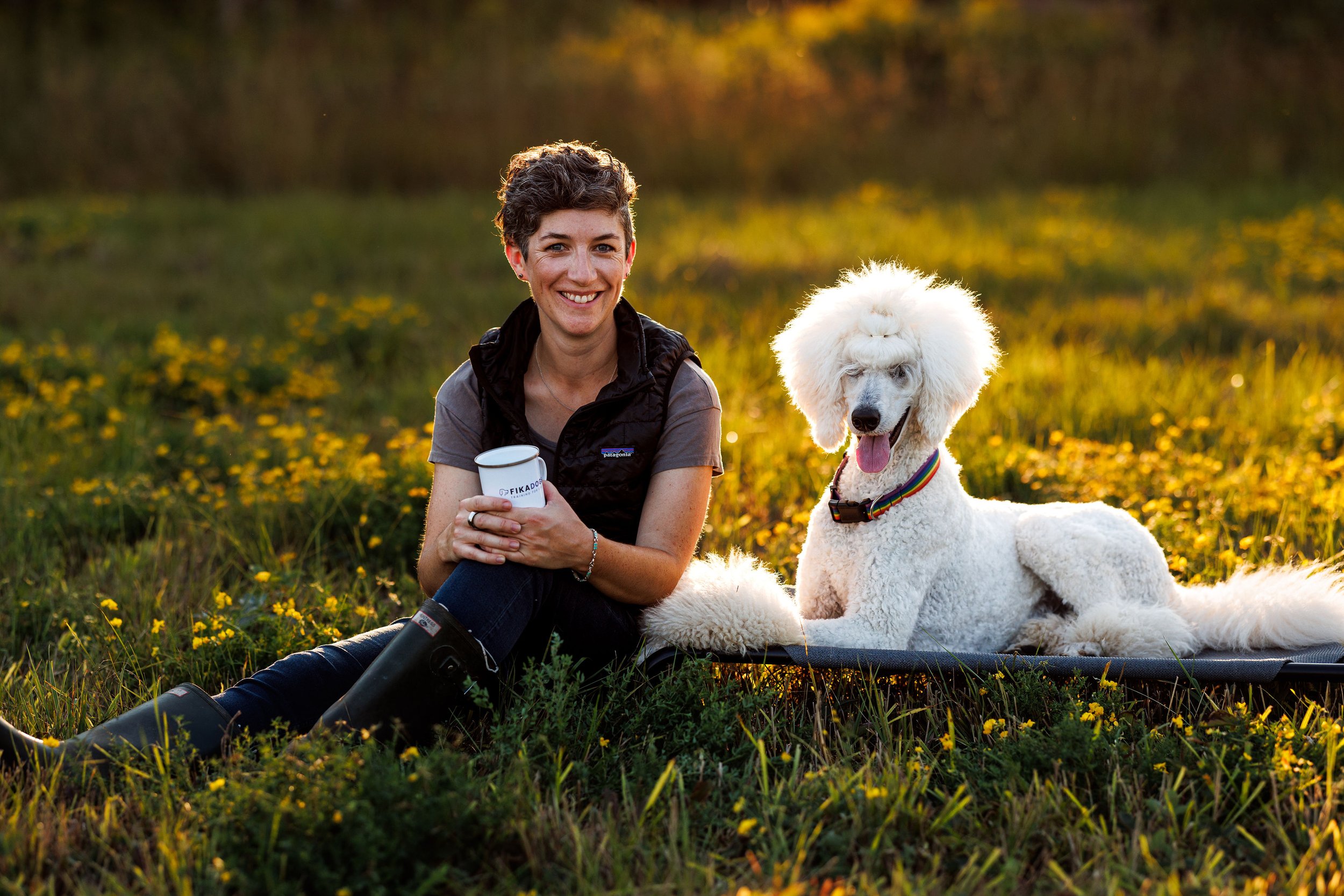About FIKAdogs
I’m Charmaine, creator and primary trainer at FIKAdogs. It’s taken me a number of years, and having dogs my whole life, to get to this place. I’ve been to every type of dog training class you could imagine, and been told every piece of dog training advice that goes along with it. Adverse methods (choke collars, shock collars, fear and intimidation) never really felt right, but trainers I trusted told me it was “how dog training had to happen” and to be honest, it wasn’t until nothing seemed to be working for my current, most recent dog, that I realized there was another way.
As a German Shorthaired Pointer, she embodies breed traits of being a high energy, high-drive dog. But we had also helped and allowed her to rehearse loads of naughty behaviors over the 2.5 years of her life before discovering concept-based approaches and better management techniques. We let her largely free-roam our property and relied on an e-collar to locate and reel her back in. I also thought the only way to get a tired dog at the end of the day was through lots of strenuous exercise. We’d run her every day, barely let her nap and then wonder why in the evening she couldn’t just “settle down” and be calm. The result was she was a terror inside. Constant pacing, looking out the windows, rarely any moments of stillness. It was awful. I seriously considered re-homing her and had little to no relationship or bond.
During the pandemic I stumbled across some YouTube videos that talked about games as a way to teach concepts. The first game I remember teaching Shadow was with boundaries (also known as placework). Boundaries would help with her counter-surfing (she would literally steal food from my kids’ hands), boundaries would help her practice calm. I honestly didn’t know if it was going to work, but I tried it anyways. The levels start out so that you teach your dog the concept that the “place” you’ve identified as a boundary has lots of value and (this is key) if they choose to return to the boundary, and stay on the boundary, they get rewarded. In this case, and the case of many of the games, we simply used part of Shadow’s daily food ration instead of feeding her dinner from a bowl. She caught on within that first session and not only was it about the coolest thing I had ever experienced when it came to dog training but she was exhausted afterwards! Playing the game, used her brain, had her tuckered out in a way that we only experienced after she had been hunting for birds (i.e. using her brain in a very specific way). I was hooked and I never looked back.
I am so excited to be able to share concept-based training with others, with a keen appreciation for how to fit "training” into your every day life. That’s where FIKAdogs was born.
The word “fika” means:
a concept, a state of mind, an attitude and an important part of Swedish culture. Many Swedes consider that it is almost essential to make time for fika every day. It means making time for friends and colleagues to share a cup of coffee (or tea) and a little something to eat. Swedish Food.com
But fika doesn’t have to involve coffee or tea, having a “fika moment” is about genuinely slowing down, getting back in touch with your body and the people around you, and recharging on a deeper level. I wanted to take this “fika” approach to dog training. Especially given when you get started training, it’s easy to think that you have to have all the gear and tons of time.
FIKAdogs is about making a commitment to concept-based training and embracing and searching out the in-between moments we have to play games and promote calm throughout the day. It could be playing a quick boundary game while your tea is steeping, doing some proximity work during a commercial break or just making sure that you do a little something every day to build the relationship you have with your dog.

If we want calm, grounded dogs, we have to take time to rehearse calm, grounded moments.
Chat with me
I’m happy to answer any questions you may have about my services or concept-based training approaches.






